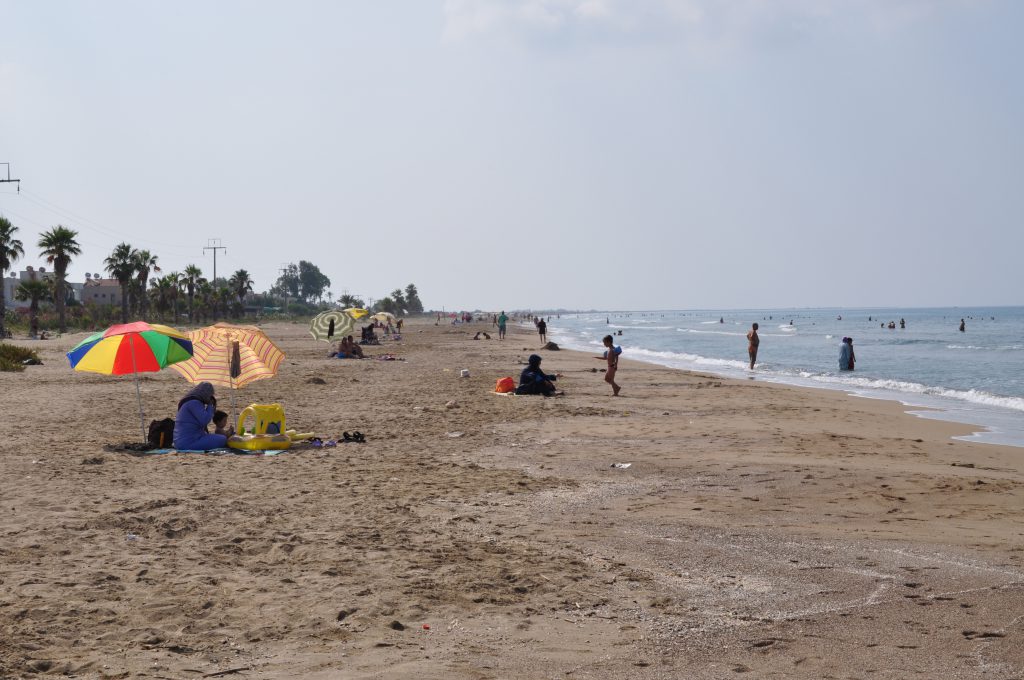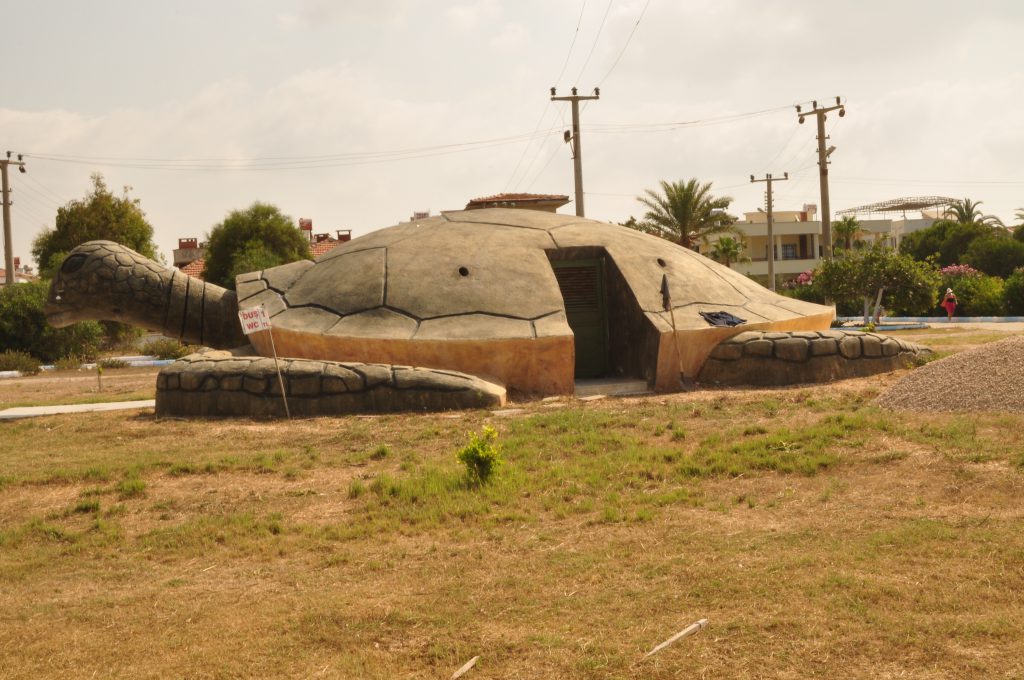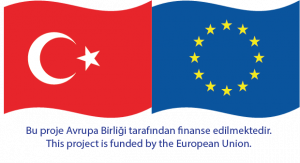


Göksu Delta Special Environmental Protection Area
Tag
City: Mersin
Area (ha): 228.5
Announcement Date: 02.03.1990
General features
Biodiversity
Flora: It is one of the rare regions where two turtle species Caretta caretta and Chelonia mydas living in the Mediterranean still lay their eggs.
In the Göksu Delta, which is at an average height of 2 m from the sea, the natural vegetation consists of dense sand dune plants and salt steppes together with the maquis formation of the Mediterranean. The investigations carried out in the region revealed that the natural vegetation changes as you go from the coast to the north, but it has been observed that there is no different change along the coast. In addition to the natural vegetation, there are also cultural plants in the Göksu Delta. It has been determined that the natural vegetation is concentrated especially in the form of coastal dune plants. Large areas around Akgöl and Paradeniz to the south of the delta are covered with low and flat saline (halophyte) vegetation. The presence of plants varies depending on soil salinity and the duration of the flood period.
The most common dominant plants for the dune areas around Akgöl are Ononis natrix and Euphorbia paralias, which can remain in flower both summer and winter. Myrtle bush (Mvrtus communis), Black bush (Paliurus spina cristi) and Vitex agnus castus are covered on the 0-3m dunes. The embankment formed by the dune dunes among the plants of the seashore coastline prevents the wind to a large extent, causing Irises (Allium sp., Iris sp.) and Muscari sp. It has created a ground that allows the development of spring species such as Between Akgöl and the coastline; Myrtus comminus (Mersin), Nerium oleander (Oleander), Styrax sp, Thymelaea hirsuta, Poterium spinosum, Ononis natrix (Oxbell), Juncus acutus (Pointed wicker grass), Cirsium sp, Salicornia europea (Sea blackberry sp.), Phragm sp (Snake pillow), Pancratium maritimum (Sand lily), Tamarix smyrnensis (Tamaritan), Urgenia maritima, Artemisia sp., Linum sp., Anthemis sp., Chrysanthemum sp., Limonium sp. (Limonium), Halimione portulacoides, Datura sp. ., species were identified. Paradeniz, common plants, Phragmites sp. and Thypa sp. next to the reeds Juncus sp. and Scirpus sp., Arthrocnemum glaucum, Inula crithmoides (Anduz grass), Suaeda maritima, Urgenia maritima, Salicornia europea (Sea cowpea), Halimione portulacoides, Chenepodium alhangi and some shrub plants, Ricinus communis (Indian oil, Statvulus). sp., Limonium sp.’s. Field edges Malya sp. with plants such as Nargissus sp. (Nergiz), Mandragora sp., Achillea sp. includes such types. The shores of Göksu River are mostly Salicornia sp. are covered with species.
It is seen that mostly salty plants and dune vegetation dominate the Göksu Delta, especially the species belonging to the Salicornia and Euphorbia genera are concentrated in the west of the Delta, around Akgöl and Paradeniz. In addition, it is seen that Zygophyllum album (Wild cumin), which was detected very close to the sea, maintains its position almost intertwined with the water structure as you go from west to east. The presence of aquatic plants in the lakes in the Göksu Delta depends on the water regime and salinity of the lagoons. “Potamogeton pectinatus” (Water grass, water hyacinth) covers almost the entire Akgöl. These species not only provide food for waterfowl, but also provide their protection in winter. At the beginning of March, plants are very few on the surface of the water.
The length of the drift line of “Ruppia cirrhosa” (Leech Duckweed) in Paradeniz indicates that it is a structure that floats on water and gives seeds.
The flat and wide northern parts of Akgöl are surrounded by reed beds. Generally, the dominant species is “Phragmites australis” (Reed), and in some places, “Arundo donax” (Spike, bobbin rod) or “Thypa latifolia” becomes dominant. It can be said that the plants in the area are composed of salty succulent halophytes, pillow-shaped xerophytes and straw-shaped hemicryptophytes.
Fauna: Numerous bird species that use the Göksu Delta as a wintering and hatching area contribute to the formation of an interesting and lively landscape in almost every season of the year, further increasing the recreational potential and attractiveness of the Delta. As a result of the researches, the birds made Göksu Delta both a wintering and incubation area.
It has been determined that they are used as native species and some of them are native species. Especially in the Mediterranean belt, the reed rooster, which is only found in certain regions and whose numbers are gradually decreasing, is one of the most important bird species of the “Porphyrio porphyrio” conservation area and is almost the symbol of this region. The ornithological studies carried out in the Göksu Delta have revealed that the bird population and the number of species have increased significantly, especially during the winter months and during the migration period. To date, more than 300 bird species have been identified in the Delta. Göksu Delta has a special importance for Great Flamingos “Phoenicopterus ruber“.
The reason is that this species uses Delta regularly. The abundance of birds in the Göksu Delta confirms that, apart from the hatching season, the Delta is also used for post-mating migration, wintering and pre-mating migration of many birds.
As a result of a study to determine the Herpetological (Reptiles and Amphibians, Frogs) importance of the Göksu Delta, 34 species were identified. Four of these species are toads and aquatic frogs (Anura), six species of tortoises, fourteen species of lizards (Scauria) and ten species of snakes. Göksu Delta sea turtles “Caretta caretta” and “Chelonia mydas” lay their eggs, the most important main nesting site in the Mediterranean.
In addition, the soft-shelled Nile Tortoise “Trionxy tringuis” is also found in this region. It has been determined that turtles mostly nest in the southwestern part of the delta. Although the eastern part of the delta has areas with less nesting opportunities, there are suitable nesting habitats here as well. The length of the beach, where sea turtles lay their eggs, reaches 10.5 km in the protected area.
Four types of fish are caught in Akgöl. Two of these are salinity-tolerant migratory fish species; eel (Anguilla anguilla) and flathead grey mullet (Mugil cephalus) cross into the Paradeniz Lagoon. In addition, two freshwater species carp (Cypinus carpio) and catfish (Clarias Lazera) lay eggs in this lake. Eel and Catfish are mostly hunted for export, while other species are consumed in the region.
The fishing tools and equipment used in fishing in Paradeniz are not sufficient and traditional methods are used. As fish species; sea bass (Dicentrarcus labrax), sea bream (Sparus auratta), common dentex (Dentex dentex), black sea bream (Cantharus lineatus), common two-banded sea bream (Diplodus vulgaris), saddled seabream (Oblada melenura), common white seabream (Diplodus sargus), striped seabream (Lithognatus mormy) , red porgy (Pagrus pagrus) is hunted. Fishing of “Callinectes sapidus” of blue crabs, another aquatic product in Göksu Delta, continues from June to October, when the water is warm, in Akgöl and Paradeniz.
In addition, in the examinations made on the sandbank that separates the Paradeniz from the Mediterranean, it has been determined that the crabs live in a very sandy structure.
